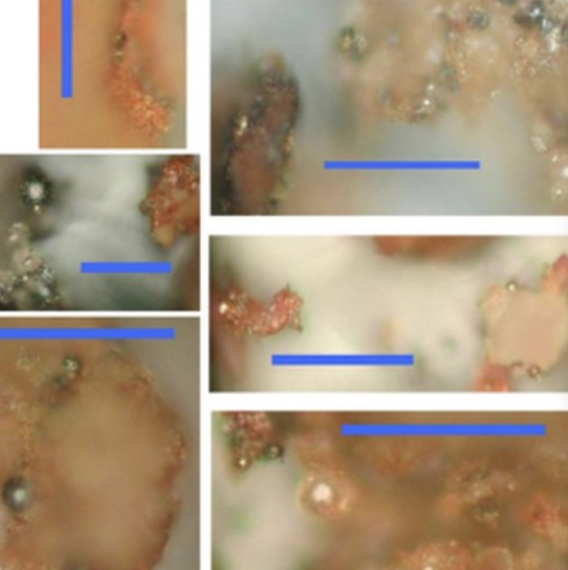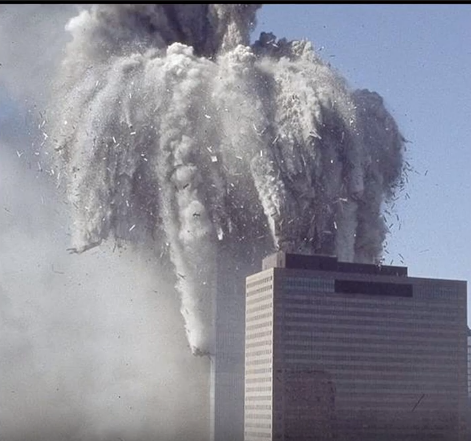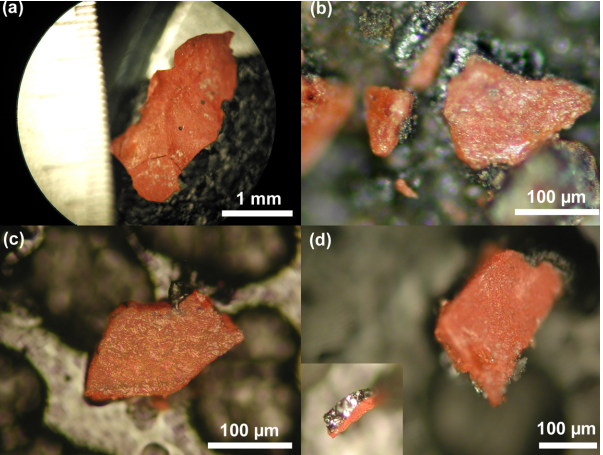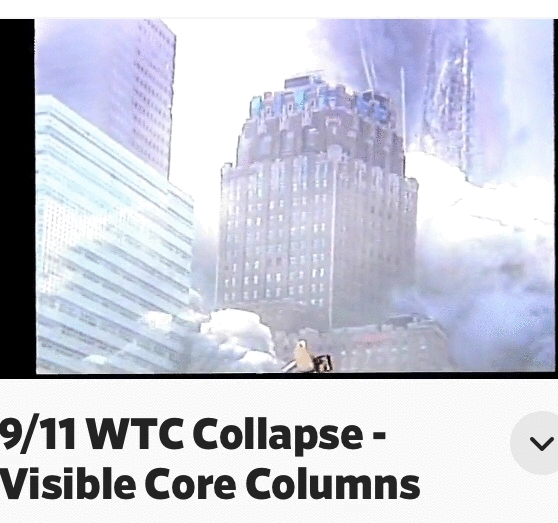It looks like you're using an Ad Blocker.
Please white-list or disable AboveTopSecret.com in your ad-blocking tool.
Thank you.
Some features of ATS will be disabled while you continue to use an ad-blocker.
share:
a reply to: Hulseyreport
Then link to the application for the permit, the government department that oversees permitting, and the law that requires permitting based on particle sizing.
Then link to the application for the permit, the government department that oversees permitting, and the law that requires permitting based on particle sizing.
edit on 2-12-2019 by neutronflux because: Added and fixed
#
originally posted by: neutronflux
a reply to: Hulseyreport
Then link to the application for the permit, the government department that oversees permitting, and the law that requires permitting based on particle sizing.
Read it. The company has terms and conditions that apply to the customer. ( buyer) Since its 2019, it probably lot easier now to purchase Nano AI from specializing companies. The company has to obey their own rules. There no company that can just manyfacturer chemical products and not inform anyone about it. Unless you live in Africa or somewhere where there no regulation and federal agencies watching purchases.
www.ssnano.com...
a reply to: Hulseyreport
Can you give a straight answer to anything.
I just placed the below in my cart with no permit. I could have the stuff around Dec 6 with no permit.
Now.
Then link to the application for the permit, the government department that oversees permitting, and the law that requires permitting based on particle sizing.
Can you give a straight answer to anything.
I just placed the below in my cart with no permit. I could have the stuff around Dec 6 with no permit.
Estimated delivery:
Dec. 6, 2019 - Dec. 10, 2019
Aluminum Powder 5 Micron - 2.2 Pounds for a Range of Activities Such as Color Additives, Painting and Other Weekend Hobbies!
Aluminum Powder 5 Micron - 2.2 Pounds for a Range of Activities Such as Color Additives, Painting and Other Weekend Hobbies!
$19.95
In Stock.
Sold by: ESKS
Now.
Then link to the application for the permit, the government department that oversees permitting, and the law that requires permitting based on particle sizing.
edit on 2-12-2019 by neutronflux because: Added and fixec
a reply to: Hulseyreport
This is your quote
Yet, you can buy the below with no permit
I don’t think there is even a hazmat fee.
This is your quote
You need permits to buy it
Yet, you can buy the below with no permit
Estimated delivery:
Dec. 6, 2019 - Dec. 10, 2019
Aluminum Powder 5 Micron - 2.2 Pounds for a Range of Activities Such as Color Additives, Painting and Other Weekend Hobbies!
Aluminum Powder 5 Micron - 2.2 Pounds for a Range of Activities Such as Color Additives, Painting and Other Weekend Hobbies!
$19.95
In Stock.
Sold by: ESKS
I don’t think there is even a hazmat fee.
edit on 2-12-2019 by neutronflux because: Fixed
originally posted by: neutronflux
a reply to: Hulseyreport
Can you give a straight answer to anything.
I just placed the below in my cart with no permit. I could have the stuff around Dec 6 with no permit.
Estimated delivery:
Dec. 6, 2019 - Dec. 10, 2019
Aluminum Powder 5 Micron - 2.2 Pounds for a Range of Activities Such as Color Additives, Painting and Other Weekend Hobbies!
Aluminum Powder 5 Micron - 2.2 Pounds for a Range of Activities Such as Color Additives, Painting and Other Weekend Hobbies!
$19.95
In Stock.
Sold by: ESKS
Now.
Then link to the application for the permit, the government department that oversees permitting, and the law that requires permitting based on particle sizing.
Sad you don't know the difference between nano and a micron. Google it and inform yourself. Instead of being wrong for weeks about everything, try to learn.
a reply to: Hulseyreport
Then what size particle are your talking about? What size of particle was Harrit claiming? Can you cite Harrit?
Then what size particle are your talking about? What size of particle was Harrit claiming? Can you cite Harrit?
a reply to: Hulseyreport
You mean like from the original online dealer I cited
www.abovetopsecret.com...
You mean like from the original online dealer I cited
www.abovetopsecret.com...
Aluminum Nanoparticles/ Nanopowder (Al, 99.9% 40-60 nm)
Product #: 0220XH
Aluminum Nanoparticles/ Nanopowder (Al, 99.9%, 40-60 nm)
$121/25g
$338/100g
Please contact us for quotes on larger quantities.
Product Properties
Aluminum Nanopowder/ Nanoparticles (Al, 99.9%, 40~60nm)
Al Nanopowder Purity: 99.9% trace metals basis
Al Nanopowder Appearance: Black nanopowder
Al Nanopowder APS: 40-60 nm
Al Nanopowder SSA: 20-48 m2/g
Al Nanopowder Morphology: spherical
Al Nanopowder Bulk density: 0.08-0.2 g/cm3
Al Nanopowder True density: 2.7 g/cm3
0220XH Aluminum Nanoparticles/ Nanopowder Specification for Download
www.ssnano.com...
originally posted by: Hulseyreport
With it being a Nano AI+ Nano Si Iron Oxide with Carbon mixture-
That is exactly what we have been telling you. It's a paint chip.
If it has all the ingredients of a paint chip, then it is a paint chip.
It's Laclede standard steel joist paint to be exact.
The aluminum/silicate and iron/oxide particle size is 50.8 microns.
en.wikipedia.org...
originally posted by: waypastvne
originally posted by: Hulseyreport
With it being a Nano AI+ Nano Si Iron Oxide with Carbon mixture-
That is exactly what we have been telling you. It's a paint chip.
If it has all the ingredients of a paint chip, then it is a paint chip.
It's Laclede standard steel joist paint to be exact.
The aluminum/silicate and iron/oxide particle size is 50.8 microns.
en.wikipedia.org...
How many times do I have to point this for you boys?
Aluminum silicate is Aluminum oxide. Aluminum oxide and Iron oxide don't mix for thermite.
Why would paint manufacturer use Nano distributed particles, the most expensive particles there is for just primer paint?
We can see the red/chips experienced a thermatic reaction. On the chips that got burned by DSC. Harrit burned chips you can view the Iron molten spheres on the chip!

Mick West and others have never shown paint chips when burned release iron spheres.
His burning Iron and steel with heat torches and welding tools and then went and started claiming i can create them too without thermite.
Of course, he carries on and does not reveal his actually heating up Iron and Steel to its melting point to develop them! He's a phony a scam artist and trying to dismiss the evidence that Iron microspheres were created by a thermite reaction.
Mick of course can explain how they formed in 6 percent of dust that covers Manhattan. That's an estimate based on what they found in building only affected by the collapses.
I found an interesting article about nanothermite.
This paper reports the modeling of pressure waves from the explosive reaction of nano-thermites consisting of mixtures of nanosized aluminum and oxidizer granules. Such nanostructured thermites have higher energy density (up to 26 kJ/cm3) and can generate a transient pressure pulse four times larger than that from trinitrotoluene (TNT) based on volume equivalence. A plausible explanation for the high pressure generation is that the reaction times are much shorter than the time for a shock wave to propagate away from the reagents region so that all the reaction energy is dumped into the gaseous products almost instantaneously and thereby a strong shock wave is generated. The goal of the modeling is to characterize the gas dynamic behavior for thermite reactions in a cylindrical reaction chamber and to model the experimentally measured pressure histories.
aip.scitation.org...
There is no doubt in my mind, this was caused by pressure overload inside the towers. Pressure is what would pulverise the concete to fine particles and propel everything sideways.

This paper reports the modeling of pressure waves from the explosive reaction of nano-thermites consisting of mixtures of nanosized aluminum and oxidizer granules. Such nanostructured thermites have higher energy density (up to 26 kJ/cm3) and can generate a transient pressure pulse four times larger than that from trinitrotoluene (TNT) based on volume equivalence. A plausible explanation for the high pressure generation is that the reaction times are much shorter than the time for a shock wave to propagate away from the reagents region so that all the reaction energy is dumped into the gaseous products almost instantaneously and thereby a strong shock wave is generated. The goal of the modeling is to characterize the gas dynamic behavior for thermite reactions in a cylindrical reaction chamber and to model the experimentally measured pressure histories.
aip.scitation.org...
There is no doubt in my mind, this was caused by pressure overload inside the towers. Pressure is what would pulverise the concete to fine particles and propel everything sideways.

a reply to: Hulseyreport
What you not get what was burnt by Harrit was not thermite.
The chips did not burn in an inert atmosphere. The chips had inconsistent kilojoules per gram. To quote pteridine, “ note that two of the chips, #3 and #4 have far more energy than if they were 100% thermite. “
Exactly what properties of thermite did Harrit’s/ Jones chips have?
You really need to read through the thread, “ An analysis of the DSC data in the Herrit-Jones paper.”
www.abovetopsecret.com...
What you not get what was burnt by Harrit was not thermite.
The chips did not burn in an inert atmosphere. The chips had inconsistent kilojoules per gram. To quote pteridine, “ note that two of the chips, #3 and #4 have far more energy than if they were 100% thermite. “
Exactly what properties of thermite did Harrit’s/ Jones chips have?
You really need to read through the thread, “ An analysis of the DSC data in the Herrit-Jones paper.”
www.abovetopsecret.com...
An analysis of the DSC data in the Herrit-Jones paper
By pteridine
www.abovetopsecret.com...
www.abovetopsecret.com...
Based on this figure, we may approximate the following theoretical and measured energies:
Not measured in this experiment:
HMX = 5.5 kJ/g
TNT = 4.5 kJ/g
TATB = 4.1kJ/g
Thermite = 3.9 kJ/g
Measured in this experiment:
Chip #1 = 1.5 kJ/g
Chip #2 = 2.5 kJ/g
Chip #3 = 7.5 kJ/g
Chip #4 = 5.9 kJ/g
The first thing we notice is the wide disparity of values for the “highly engineered” material. This should raise doubts as to sample collection and preparation and even if the materials are the same thing. By other analyses, they appear similar.
Now we note that two of the chips, #3 and #4 have far more energy than if they were 100% thermite. They also have more energy than any of the high explosives or any combination of thermite and any high explosive as a composite. Arithmetically, if we have a 50:50 mix of thermite and HMX we should have an energy of about 4.7 kJ/g -- below that of chips #3 and #4. How can this be?
To explain this, we must understand what is being measured and how. The explosives and thermite have, internal to them, their own oxidants. We include their oxygen in the weight we measured. If we measure heat from a burning hydrocarbon, for example, we DON’T include the weight of the oxygen in the air we use to burn it. Candle wax burning in air has about 10 times the energy/gram of thermite using this convention. What does this mean? It means that some, if not all, of the energy from the red chips is due to burning of the carbonaceous paint matrix in air.
Jones is vague about this problem and says on p27. “We suggest that the organic material in evidence in the red/gray chips is also highly energetic, most likely producing gas to provide explosive pressure.” What might that energetic material be? Jones has no clue. His team lacks the chemical knowledge to postulate a reasonable composition. It has no nitrogen, so it is not one of the explosives shown. It is energetic when burning in air. So is candle wax. Volatilized, it will produce gas but it does not seem to be otherwise energetic. How can this problem be resolved? What experiment must be done to show the possibility of thermite or some composite?
As I have stated above, thermite and explosives have their own oxidants built in. burning hydrocarbons do not. How can Jones discriminate between explosives, thermite and plain old burning paint?
He can re-run the DSC under an argon atmosphere. What a simple and elegant solution. Under argon, all the energy coming out will be from the thermite and its energetic additives. If there is no energy coming out, there is no thermite and all those contortions and obfuscations are for naught. Why wouldn’t Jones do this obvious experiment? Maybe he did and didn’t like the results.
originally posted by: neutronflux
a reply to: Hulseyreport
Then what size particle are your talking about? What size of particle was Harrit claiming? Can you cite Harrit?
You can see in these images. First Image shows a chip that much larger than nano. 1, 2, 3 are all nanosized chips.

originally posted by: neutronflux
a reply to: Hulseyreport
What you not get what was burnt by Harrit was not thermite.
The chips did not burn in an inert atmosphere. The chips had inconsistent kilojoules per gram. To quote pteridine, “ note that two of the chips, #3 and #4 have far more energy than if they were 100% thermite. “
Exactly what properties of thermite did Harrit’s/ Jones chips have?
You really need to read through the thread, “ An analysis of the DSC data in the Herrit-Jones paper.”
www.abovetopsecret.com...
An analysis of the DSC data in the Herrit-Jones paper
By pteridine
www.abovetopsecret.com...
www.abovetopsecret.com...
Based on this figure, we may approximate the following theoretical and measured energies:
Not measured in this experiment:
HMX = 5.5 kJ/g
TNT = 4.5 kJ/g
TATB = 4.1kJ/g
Thermite = 3.9 kJ/g
Measured in this experiment:
Chip #1 = 1.5 kJ/g
Chip #2 = 2.5 kJ/g
Chip #3 = 7.5 kJ/g
Chip #4 = 5.9 kJ/g
The first thing we notice is the wide disparity of values for the “highly engineered” material. This should raise doubts as to sample collection and preparation and even if the materials are the same thing. By other analyses, they appear similar.
Now we note that two of the chips, #3 and #4 have far more energy than if they were 100% thermite. They also have more energy than any of the high explosives or any combination of thermite and any high explosive as a composite. Arithmetically, if we have a 50:50 mix of thermite and HMX we should have an energy of about 4.7 kJ/g -- below that of chips #3 and #4. How can this be?
To explain this, we must understand what is being measured and how. The explosives and thermite have, internal to them, their own oxidants. We include their oxygen in the weight we measured. If we measure heat from a burning hydrocarbon, for example, we DON’T include the weight of the oxygen in the air we use to burn it. Candle wax burning in air has about 10 times the energy/gram of thermite using this convention. What does this mean? It means that some, if not all, of the energy from the red chips is due to burning of the carbonaceous paint matrix in air.
Jones is vague about this problem and says on p27. “We suggest that the organic material in evidence in the red/gray chips is also highly energetic, most likely producing gas to provide explosive pressure.” What might that energetic material be? Jones has no clue. His team lacks the chemical knowledge to postulate a reasonable composition. It has no nitrogen, so it is not one of the explosives shown. It is energetic when burning in air. So is candle wax. Volatilized, it will produce gas but it does not seem to be otherwise energetic. How can this problem be resolved? What experiment must be done to show the possibility of thermite or some composite?
As I have stated above, thermite and explosives have their own oxidants built in. burning hydrocarbons do not. How can Jones discriminate between explosives, thermite and plain old burning paint?
He can re-run the DSC under an argon atmosphere. What a simple and elegant solution. Under argon, all the energy coming out will be from the thermite and its energetic additives. If there is no energy coming out, there is no thermite and all those contortions and obfuscations are for naught. Why wouldn’t Jones do this obvious experiment? Maybe he did and didn’t like the results.
You talking utter nonsense. You see the Iron Molten on the chip. How can you make that without the heat?
Iron microsphere is molten Iron that involves melting point of 1700c.
Inert atmosphere is just something debunkers like to mention. However, you don't need to test in open-air enviroment when the thermite possesses its holding oxygen supply! Debunkers are just clueless to what thermite is or just makiing another excuse to deny they found nanothermite.
Energy release is irrelevant as all four chips created Iron Microspheres so we recognize there free AI embedded in the chips. Variations in energy is another topic and do not explain away Iron spheres being created after burning.
edit on 2-12-2019 by Hulseyreport because: (no reason given)
a reply to: Hulseyreport
You should have read the fine print you false arguer...
From your own source
What type of thermite was used as claimed by Harrit Jones? Aluminum and iron oxide. What is the max energy per gram for a Fe2O3 + 2 Al reaction?
This is also what your source states
So you are saying pressure waves cut steel columns? When there is no audio of a detonation indicative of detonations with the force to cut steel columns? No signs of pressure events with the force to cut steel columns. No flashing of explosive devices. No demolition shrapnel. No seismic evidence of detonations with the force to cut steel columns? With no way controlled demolition systems would survive jet impacts and fires to initiate the collapse of WTC 1 and WTC 2 on the floors of the impact damage. Or the fires and debris damage of WTC 7.
With columns still standing in the twin towers after the complete collapse of the floor system.


What do you not get there is no evidence the collapse of the WTC buildings was initiated or sustained by pyrotechnics.
You should have read the fine print you false arguer...
From your own source
Experimental data for Al/Bi2O3 mixtures were used to validate the model with attention focused on the ratio of specific heats and the drag coefficient.
aip.scitation.org...
What type of thermite was used as claimed by Harrit Jones? Aluminum and iron oxide. What is the max energy per gram for a Fe2O3 + 2 Al reaction?
This is also what your source states
can generate a transient pressure pulse four times larger than that from trinitrotoluene (TNT) based on volume equivalence.
So you are saying pressure waves cut steel columns? When there is no audio of a detonation indicative of detonations with the force to cut steel columns? No signs of pressure events with the force to cut steel columns. No flashing of explosive devices. No demolition shrapnel. No seismic evidence of detonations with the force to cut steel columns? With no way controlled demolition systems would survive jet impacts and fires to initiate the collapse of WTC 1 and WTC 2 on the floors of the impact damage. Or the fires and debris damage of WTC 7.
With columns still standing in the twin towers after the complete collapse of the floor system.


What do you not get there is no evidence the collapse of the WTC buildings was initiated or sustained by pyrotechnics.
edit on 2-12-2019 by
neutronflux because: Fixed and added
a reply to: Hulseyreport
Let’s see. I asked you to quote what’s size Harrit / Jones said their aluminum particles were? So they actually did not write an actual statement.
And I stated and asked:
What do you not get what was burnt by Harrit was not thermite.
The chips did not burn in an inert atmosphere. The chips had inconsistent kilojoules per gram. To quote pteridine, “ note that two of the chips, #3 and #4 have far more energy than if they were 100% thermite. “
Exactly what properties of thermite did Harrit’s/ Jones chips have?
Let’s see. I asked you to quote what’s size Harrit / Jones said their aluminum particles were? So they actually did not write an actual statement.
And I stated and asked:
What do you not get what was burnt by Harrit was not thermite.
The chips did not burn in an inert atmosphere. The chips had inconsistent kilojoules per gram. To quote pteridine, “ note that two of the chips, #3 and #4 have far more energy than if they were 100% thermite. “
Exactly what properties of thermite did Harrit’s/ Jones chips have?
edit on 2-12-2019 by neutronflux because: Added and fixed
edit on 2-12-2019 by neutronflux because: Fixed more.
a reply to: Hulseyreport
I get what you're attempting to point out but that's a terrible way of going about it (using those pictures)
A micron (aka micrometre) is 10^-6 metre
A nanometre is 10^-9 metre IE there are a thousand nanometres in a micron.
Therefore, showing chips with a dimension of around 100 microns (100 000 nanometres) is definitely not going to convince anyone of 'nanotech' material evidence. You need to examine the material composition at vastly higher magnification to make such a determination.
Also, the presence of (supposedly) elemental iron that solidified on the proposed nano material creates an issue
IE why didn't the material ignite in contact with molten or barely solidified iron? (considering the material was able to be ignited in the lab at just 400C or thereabouts)
I get what you're attempting to point out but that's a terrible way of going about it (using those pictures)
A micron (aka micrometre) is 10^-6 metre
A nanometre is 10^-9 metre IE there are a thousand nanometres in a micron.
Therefore, showing chips with a dimension of around 100 microns (100 000 nanometres) is definitely not going to convince anyone of 'nanotech' material evidence. You need to examine the material composition at vastly higher magnification to make such a determination.
Also, the presence of (supposedly) elemental iron that solidified on the proposed nano material creates an issue
IE why didn't the material ignite in contact with molten or barely solidified iron? (considering the material was able to be ignited in the lab at just 400C or thereabouts)
edit on 2/12/2019 by Pilgrum because: (no reason given)
a reply to: Hulseyreport
You
Is this false? Steel will burn when “ sufficiently large surface area to mass ratio - i.e. with very small or very thin particles.”
You
Iron microsphere is molten Iron that involves melting point of 1700c.
Mick West said:
www.metabunk.org...
If you ignite some steel wool with a hydrocarbon flame, then you get lots of iron spheres, some of the same size as these microspheres. Note this is not from the flame melting the steel, but from the steel itself burning, and melting itself. This is only possible with a sufficiently large surface area to mass ratio - i.e. with very small or very thin particles.
Is this false? Steel will burn when “ sufficiently large surface area to mass ratio - i.e. with very small or very thin particles.”
originally posted by: Pilgrum
a reply to: Hulseyreport
I get what you're attempting to point out but that's a terrible way of going about it (using those pictures)
A micron (aka micrometre) is 10^-6 metre
A nanometre is 10^-9 metre IE there are a thousand nanometres in a micron.
Therefore, showing chips with a dimension of around 100 microns (100 000 nanometres) is definitely not going to convince anyone of 'nanotech' material evidence. You need to examine the material composition at vastly higher magnification to make such a determination.
Also, the presence of (supposedly) elemental iron that solidified on the proposed nano material creates an issue
IE why didn't the material ignite in contact with molten or barely solidified iron? (considering the material was able to be ignited in the lab at just 400C or thereabouts)
Determination was already made it was Nano-thermite. We can see the molten iron on the chip.. It was unignited chip that Harrit found.
Debunkers claim its paint chip. Yet I have not seen any experiment heating paint chips creates molten Iron spheres on the chip.
Until they do prove otherwise, I will believe Harrit work is honest and truthful.
edit on 2-12-2019 by Hulseyreport because: (no reason
given)
originally posted by: Hulseyreport
We can see the molten iron on the chip.. It was unignited chip that Harrit found.
Doesn't that sound like a logical inconsistency?
Molten iron on a chip that ignites at 400C yet the chip is unignited. A more logical explanation would be that the iron was at closer to room temperature when it became adhered to the supposed nano material.
a reply to: Hulseyreport
I don’t think you’ll do well going head to head with Pilgrum. Your going to be outclassed and find your intellect wanting...
Any way.
Back to this
You have any proof?
What government agency do I apply to for a permit to buy nano particles of aluminum? What’s the law governing the permitting process? Is there a quantity minimum? What’s the form number of the application? What is the form number of the permit? Where can I find permits on record?
I don’t think you’ll do well going head to head with Pilgrum. Your going to be outclassed and find your intellect wanting...
Any way.
Back to this
You need permits to buy it
You have any proof?
What government agency do I apply to for a permit to buy nano particles of aluminum? What’s the law governing the permitting process? Is there a quantity minimum? What’s the form number of the application? What is the form number of the permit? Where can I find permits on record?
edit on 2-12-2019 by neutronflux because: Fixed
new topics
-
The more I think about it
General Chit Chat: 16 minutes ago -
What Comes After January 20th
Mainstream News: 2 hours ago -
Canada as a state .. how would it work?
General Chit Chat: 2 hours ago -
Those stupid GRAVITE commercials
Rant: 2 hours ago -
Let's Buy Greenland
General Chit Chat: 3 hours ago -
Planned Civil War In Britain May Be Triggered Soon
Social Issues and Civil Unrest: 6 hours ago -
Claim: General Mark Milley Approved Heat and Sound Directed Energy Weapons During 2020 Riots
Whistle Blowers and Leaked Documents: 8 hours ago
top topics
-
Claim: General Mark Milley Approved Heat and Sound Directed Energy Weapons During 2020 Riots
Whistle Blowers and Leaked Documents: 8 hours ago, 11 flags -
What Comes After January 20th
Mainstream News: 2 hours ago, 8 flags -
Planned Civil War In Britain May Be Triggered Soon
Social Issues and Civil Unrest: 6 hours ago, 6 flags -
Let's Buy Greenland
General Chit Chat: 3 hours ago, 5 flags -
Those stupid GRAVITE commercials
Rant: 2 hours ago, 4 flags -
Canada as a state .. how would it work?
General Chit Chat: 2 hours ago, 3 flags -
The more I think about it
General Chit Chat: 16 minutes ago, 0 flags
active topics
-
What Comes After January 20th
Mainstream News • 11 • : xuenchen -
January 6th report shows disturbing trend (nobody is shocked)
US Political Madness • 80 • : matafuchs -
Sorry to disappoint you but...
US Political Madness • 41 • : lilzazz -
The more I think about it
General Chit Chat • 0 • : theatreboy -
Canada as a state .. how would it work?
General Chit Chat • 9 • : alldaylong -
Stuck Farmer And His Queue Jumping Spawn
Rant • 11 • : covent -
Post A Funny (T&C Friendly) Pic Part IV: The LOL awakens!
General Chit Chat • 7999 • : underpass61 -
Remember These Attacks When President Trump 2.0 Retribution-Justice Commences.
2024 Elections • 138 • : matafuchs -
-@TH3WH17ERABB17- -Q- ---TIME TO SHOW THE WORLD--- -Part- --44--
Dissecting Disinformation • 3958 • : fringeofthefringe -
President Carter has passed
Mainstream News • 41 • : WeMustCare


